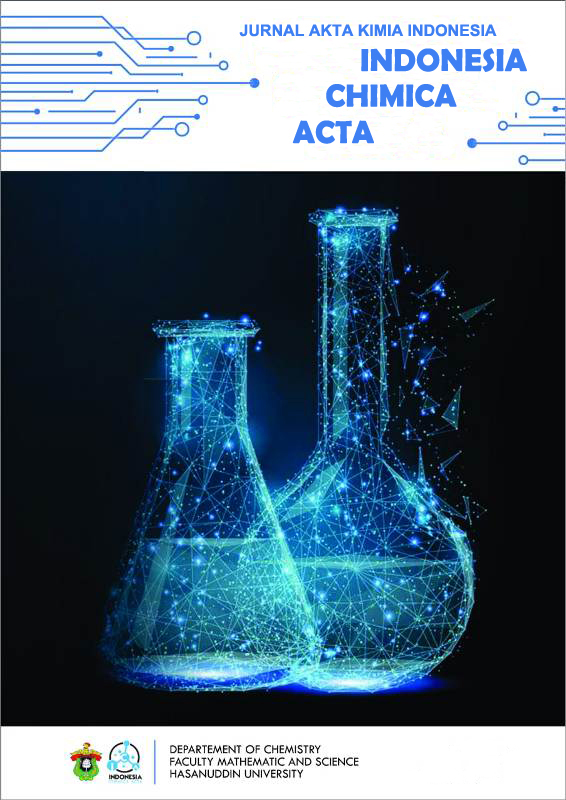SYNTHESIS AND CHARACTERIZATION OF GOLD NANOPARTICLES USING TEAK LEAF EXTRACT Tectona grandis
Abstract
Teak leaf extract has been successfully used in the synthesis of gold nanoparticles. It is characterized by a color change of the solution from yellow to red wine after the addition of teak leaf extract to HAuCl4 and the resulting wavelengths in the range of 500-600 nm that indicates that gold nanoparticles have been formed. Growth and stability of the gold nanoparticles produced using UV-Vis Spectroscopy. During observation during 144 hours the stability of gold nanoparticles after 48 hours with a wavelength of about 567.5 -568 nm.
Full text article
References
Awad, M.A., Ortashi, K.M., Hendi, A.A., Eisha, N.E and Al-Abbas, F. 2015. Novel Green Synthesis and Characterization of Nanopolymer Porous Gold Oxide Nanoparticles. Tropical Journal of Pharmaceutical Research; 14(10; 1763-1768
Calagua, A., Alarcon, H., Paraguay, F., and Rodriguez, J. 2015. Synthesis and Characterization of Bimetallic Gold-Silver Core-Shell Nanoparticles: A Green Approach. Advances in Nanoparticles, 2015, 4, 116-121.
Fathinatullabibah, Kawiji, and Khasanah, L.U. 2014. Stabilitas Antosianin Ekstrak Daun Jati (Tectona grandis) terhadap Perlakuan pH dan Suhu. Jurnal aplikasi Teknologi Pangan 3 (2) 2014.
Jha, A.K., Prasad, K., Prasad, L., and Kulkarni, A.R. 2009. Plant system: Nature’s nanofactory. Colloids Surf. B: Biointerfaces 73, 219—223.
Khairurrijal and Mikrajuddin. 2009. Membangun Kemampuan Riset Nanomaterial di Indonesia. Bandung : ITB.
Shankar, S.S., Rai, A., Ahmad, A., and Sastry, M. 2004. Synthesis of Au, Ag, and Bimetallic Au Core-Ag Shell Nanoparticles Using Neem (Azadirachta indica) Leaf Broth. J. Coloid Interface Sci.
Authors
This is an open access journal which means that all contents is freely available without charge to the user or his/her institution. Users are allowed to read, download, copy, distribute, print, search, or link to the full texts of the articles in this journal without asking prior permission from the publisher or the author.
Jurnal Akta Kimia Indonesia (Indonesia Chimica Acta) operates a CC BY-SA 4.0 © license for journal papers. Copyright remains with the author, but Jurnal Akta Kimia Indonesia (Indonesia Chimica Acta) is licensed to publish the paper, and the author agrees to make the article available with the CC BY-SA 4.0 license. Reproduction as another journal article in whole or in part would be plagiarism. Jurnal Akta Kimia Indonesia (Indonesia Chimica Acta) reserves all rights except those granted in this copyright notice.

